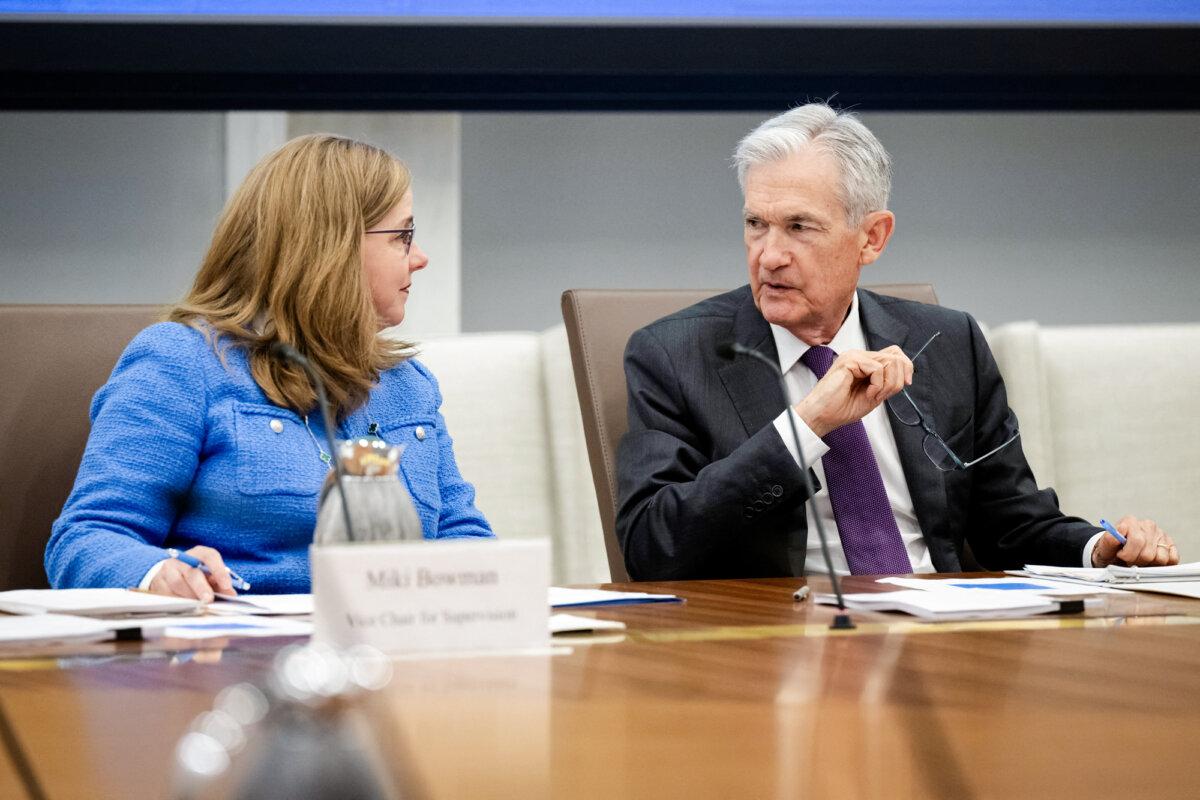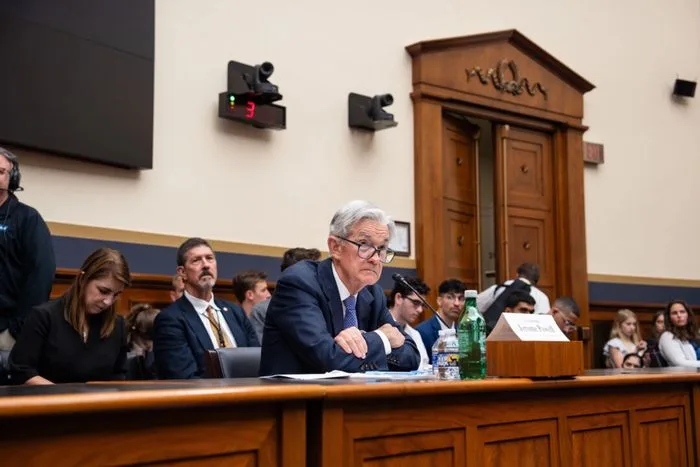By Andrew Moran
It’s going to take a while to sort out the impact of President Donald Trump’s tariffs on inflation, so members of the Federal Reserve board are not in unity on whether it’s time to introduce a rate cut, minutes from the July policy meeting indicate.
Fed officials were divided at last month’s Federal Open Market Committee (FOMC) meeting over tariffs and the state of the inflation and labor markets. Policymakers maintained the benchmark federal funds rate in a range of 4.25 percent to 4.5 percent for the fifth consecutive meeting.
Minutes from the July meeting, released on Aug. 20, suggested that while there are risks to the dual mandate—maximum employment and price stability—“a majority of participants judged the upside risk to inflation as the greater of these two risks.”
Participants noted that tariff effects were beginning to appear in the data, pointing to recent increases in goods price inflation.
Others, however, stated that the levies “were masking the underlying trend of inflation and, setting aside the tariff effects, inflation was close to target.”
Some Fed officials also pointed to the lag effect of trade policy. “In terms of timing, many participants noted that it could take some time for the full effects of higher tariffs to be felt in consumer goods and services prices,” the meeting summary stated.
They alluded to pre-tariff inventory stockpiling, slow pass-through of input cost pressures, ongoing trade negotiations, and contract-price updates as reasons for the lag in tariff-driven inflation. Some also noted that higher import duties were being absorbed by domestic businesses and consumers, with foreign exporters “paying at most a modest part of the increased tariffs.”
The minutes highlighted that “considerable uncertainty remained about the timing, magnitude, and persistence of the effects of this year’s increase in tariffs.”
Despite holding policy steady last month, some meeting participants argued that it would be neither appropriate nor feasible “to wait for complete clarity on the tariffs’ effects on inflation before adjusting the stance of monetary policy.”
Still, investors are betting that the U.S. central bank will pull the trigger on a quarter-point rate cut in September for the first time since December, according to the Atlanta Fed’s Market Probability Tracker.
The federal funds rate influences borrowing costs for businesses, consumers, and the government.
Bracing for Impact
The meeting minutes were widely anticipated on Wall Street because Fed Governor Christopher Waller and Fed Vice Chair for Supervision Michelle Bowman dissented on the decision to leave interest rates unchanged. This is the first double dissent in more than 30 years.
Since last month’s policy meeting, Bowman and Waller have issued statements justifying their decision and pointing to weakening labor market conditions.
Because monetary policy operates on a lag, the central bank should not wait to reduce rates before the situation spirals out of control, they said.
Waller, writing in an Aug. 1 statement, says the “wait and see approach is overly cautious” and fails to “properly balance the risks to the outlook and could lead to policy falling behind the curve.”
“The price effects from tariffs have been small so far, and since we will likely not get clarity on tariff levels or their ultimate impact on the economy over the course of the next several months, it is possible that the labor market falters before that clarity is obtained—if it ever is obtained,” Waller said.
“When labor markets turn, they often turn fast.”

Employment indicators have provided a mixed assessment of the broader labor market.
In addition to the worse-than-expected July jobs report, the Institute for Supply Management’s Manufacturing and Services Purchasing Managers’ Indexes (PMIs)—surveys that gauge the sectors’ prevailing economic direction—spotlighted deteriorating employment activity.
Initial jobless claims—a measure of the number of people filing new applications for unemployment benefits—have held steady throughout the summer. Recurring unemployment claims, however, continue to hover around their highest levels since November 2021.
Economic observers say businesses have frozen their staffing levels amid uncertainty, meaning they are neither terminating employees nor hiring new workers. At the same time, the latest Bureau of Labor Statistics figures show more than 7 million job openings.
Over the last few weeks, economists have debated whether policymakers should have followed through on a rate cut, considering the July jobs report, which showed a smaller-than-expected 73,000 new jobs and two-month downward revisions totaling 258,000.
“The Fed, you see, is stuck in a bit of a pickle. Unemployment may be weakening, and inflation is increasing. That makes it hard for the Fed to address one without making the other worse,” Siebert Financial CIO Mark Malek said in a note emailed to The Epoch Times.
“The Fed is paralyzed by the prospect that inflation from tariffs may respark the painful inflation the US suffered in 2021-2023. FOMC members are therefore reluctant to lower rates further.”
The July Consumer Price Index’s headline annual inflation rate came in below expectations at 2.7 percent. The Producer Price Index and import prices surprisingly soared last month.
The Jackson Hole Main Event
U.S. central bankers, academics, and prominent financial leaders will gather in Jackson Hole, Wyoming, for the annual Economic Symposium from Aug. 21 to Aug. 23.
This year’s event is titled “Labor Markets in Transition: Demographics, Productivity, and Macroeconomic Policy.”
The latest central bank retreat is notable because it will be the final time that Fed Chair Jerome Powell delivers the keynote address.
In previous years, Powell has used the annual opportunity to reflect on crucial moments for monetary policy, whether it was the institution’s inflation-fighting efforts in 2022 or “the time has come for policy to adjust” in 2024.
He is expected to reiterate statements made over the last several months: the economy remains strong, but tariff-driven uncertainty has prompted the central bank to remain on hold, waiting for greater clarity.
“There’s a fallacy in believing that central banks can manage inflation with extreme precision. The broader framework and the assumptions behind how inflation is managed need to be revisited,” Christian Hoffmann, head of fixed income at Thornburg Investment Management, said in a note emailed to The Epoch Times.
“With Jackson Hole coming up, and given that policy frameworks are periodically reviewed, it will be interesting to see whether that deeper reflection happens, but we’re not convinced it will.”
Powell’s two-term tenure has been marked by trade strife, a global pandemic, 40-year high inflation, multiple bank failures, and a contentious relationship with President Donald Trump, who first nominated Powell to the post in 2017.
With his time at the helm set to expire in May 2026, the White House has been on a mission to find his replacement. While the search initially focused on a couple of names, senior administration officials have expanded their pursuit to include other individuals.
Still, according to betting website Polymarket, Fed Gov. Christopher Waller is the heavy favorite, with 31 percent.





